Comprehending Animal Tracks Enriches Your Understanding of Nature
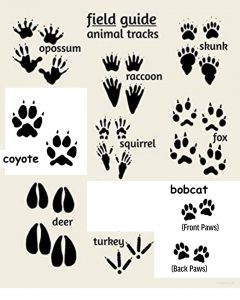
The snow we experienced in mid-December brought with it the opportunity to discover an abundance of animal tracks, turning a simple path into a deer superhighway. It’s fascinating to see where the critters go in their travels in the woods. Perhaps they feel the same way when they see our footprints or UTV tracks.
Let’s take a look at some of the most common animal tracks found in our area and learn about the critters that leave those tracks:
Bobcat (Lynx rufus): Bobcats were almost eliminated from Illinois by the mid 1900’s, but they are now found statewide. They are fierce predators and keep populations of mice, voles, rabbits and other small mammals under control. Adult males can weigh up to 40 pounds but average about 22 pounds. Adult females are smaller and weigh slightly less.
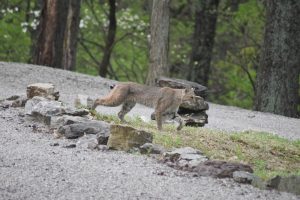
Bobcats have a ruff of fur extending from the ear to the lower jaw, tufted ears, long legs and a bobbed tail (4 to 6 inches). Bobcat tracks are round and do not have claw marks, as their claws are retractable, like all felines. Front prints average one and three-fourths to two and one-fourth inches long, with rear prints slightly smaller.
Coyote (Canis latrans): Much like bobcats, the coyote helps keep the population of small mammals and rabbits under control. As Illinois’ largest remaining predator, they are an integral part of the function of a healthy ecosystem. The coyote looks like a medium-sized dog, but its nose is more pointed and its tail is bushier than most dogs. A coyote holds its tail down between the hind legs when running.
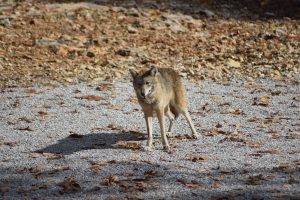
Coyotes are 23 to 26 inches high and three to four and a half feet long. They typically weigh 20 to 40 pounds, but can reach 55 pounds. Illinois coyotes are usually larger than those from the western U.S. Coyote, and most other dog tracks, are longer than they are wide and claw marks are almost always visible for canines cannot retract their claws. Front prints average two and one-fourth to two and three-fourths inches long and one and three-fourths to two and three-eighths inches wide, with rear prints slightly smaller.
Red Fox (Vulpes vulpes): Red foxes feed on small mammals and rabbits. They have been known to leave bones and other objects around the den as toys for their young, which are called kits. Red foxes are small canids, approximately three feet in length, including the tail, and weigh only 7 to 14 pounds.
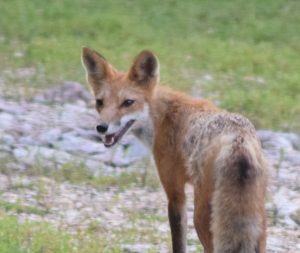
Red fox tracks show four toes and claws. The foot of the red fox is covered with hair, so toes can be indistinct. Red foxes have callous pads on their toes that sometimes show up in the prints. There is also a chevron-shaped callous pad on the heel pad of the foot. No other canine has this, which makes identification of the red fox track easier. Red fox footprints generally measure one and three-fourths to two and one-half inches long by one and one-half to two inches wide.
White-tailed Deer (Odocoileus virginianus): The white-tailed deer is the state mammal of Illinois and is the only native deer and the largest native herbivore in the state. White-tailed deer stand three to three and one-half feet tall at the shoulder. Adult males (bucks) weigh 150 to 250 pounds while adult females (does) weight 100 to 150 pounds. Typically, only males grown antlers, which are shed and re-grown every year. Antlers begin growing in early spring and may be shed as early as December. However, deer with good genetics and proper nutrition may retain their antlers well into March.
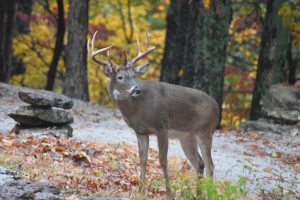
The print of a deer’s cloven hoof is a split heart shape. There are no other wild animals that make similar tracks in Illinois. Most tracks are between two and three inches long on hard ground. On soft ground, the dewclaws (functionless digits above the true hoof) may also make a mark.
Raccoon (Procyon lotor): Raccoons help control local insect and rodent populations, but can be a nuisance if you don’t keep your trash can lids on tight. They are medium sized mammals, approximately 26 to 39 inches in length (including the tail), and weigh 6 to 27 pounds depending on the animal’s age and condition. Raccoons in northern Illinois tend to be larger than those in southern Illinois.
Raccoon tracks may be easily confused with opossum tracks. Both animals have 5 toes on each foot. They also share a similar walking style that produces paired tracks, however raccoons have claws on all of their toes and walk flat-footed.
Opossum (Didelphis virginiana): The opossum is the only marsupial (carries its young in a pouch) in North America. They are believed to help control the tick population as insects are an important part of their diet. Adult opossums are the size of an average house cat, weighing six to 15 pounds, and are 24 to 33 inches in length, including the tail. Males are typically larger than females.
Opossums have five toes on each foot, similar to raccoons. However, it is easy to distinguish opossum tracks from raccoon tracks. An opossum’s rear tracks resemble a baby’s handprint. This is because the inner toe on each hind foot is opposable, lacks a claw and resembles a thumb.
Striped Skunk (Mephitis mephitis): Skunks are one of the most easily identified mammals in Illinois with their characteristic two white stripes extending back from a patch of white fur on the top of their head. On some individuals, the stripes do not extend all the way down the back or may be absent completely. Skunks eat a variety of insects and other garden pests. While you may not want to stick around to find out, skunks do warn that they are about to spray by stamping their front feet and raising their tail with the fur fully extended.
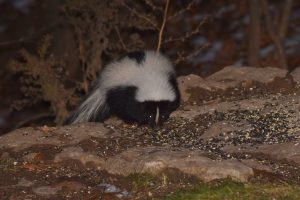
Skunks are the size of a small house cat, averaging 22 to 26 inches in total length, including the tail, and weighing three to twelve pounds. Their tracks look similar to cat tracks, but skunks have five toes while cats have only four. Also, skunk tracks will typically display claw marks because their claws do not retract like cat claws.
Fox Squirrel (Sciurus niger): The fox squirrel is the largest tree squirrel in Illinois, weighing one and three-quarters to two pounds with a length of 19 ½ to 22 inches. Squirrels are a source of food or owls, foxes, bobcats and other predators. They are also important to the ecosystem because they distribute nuts and acorns across the landscape.
Squirrel tracks are small—front feet about one-half inch by one-half inch. The hind feet are longer, about one inch long by one-half inch wide. They have five toes and typically all five show up in the footprints. Claw marks usually show up in snow or mud and resemble small handprints.
Eastern Wild Turkey (Meleagris gallopavo): The eastern wild turkey is one of six recognized subspecies of turkey in the United States, but is the only subspecies found in Illinois. Wild turkeys are large birds. The average adult male (gobbler or tom) stands three to three and one-half feet tall and weighs 18 to 24 pounds. Females (hens) are smaller and weigh about half that of a male.
The tracks of wild turkey are a classic game bird track. They are impressively large, with three large, bulbous toes and a shorter back toe, which usually only registers as a claw impression. The tracks measure three and three-quarters to five inches long by four to five and one-half inches wide.
CLIFFTOP, a local nonprofit organization, is focused on preserving and protecting area blufflands.
A version of this article appeared in the January17, 2020 edition of the Monroe County Independent.
©2020 all content rights reserved Clifftop NFP.
Comments are currently closed.
